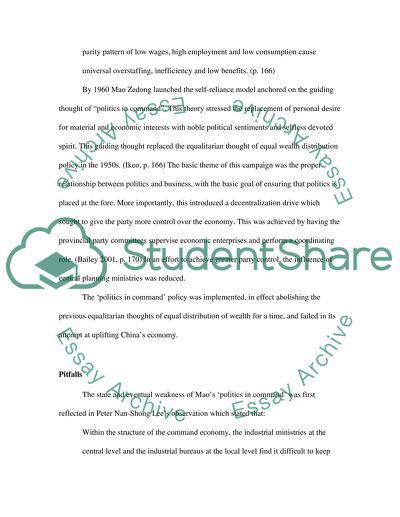Cite this document
(The policy of Politics in Command by Mao Zedong Essay, n.d.)
The policy of Politics in Command by Mao Zedong Essay. https://studentshare.org/macro-microeconomics/1542419-maos-policy-of-politics-in-command-set-the-agenda-for-the-chinese-economy-for-the-last-half-of-the-20th-century-in-china-do-you-agree-with-the-statement-wh
The policy of Politics in Command by Mao Zedong Essay. https://studentshare.org/macro-microeconomics/1542419-maos-policy-of-politics-in-command-set-the-agenda-for-the-chinese-economy-for-the-last-half-of-the-20th-century-in-china-do-you-agree-with-the-statement-wh
(The Policy of Politics in Command by Mao Zedong Essay)
The Policy of Politics in Command by Mao Zedong Essay. https://studentshare.org/macro-microeconomics/1542419-maos-policy-of-politics-in-command-set-the-agenda-for-the-chinese-economy-for-the-last-half-of-the-20th-century-in-china-do-you-agree-with-the-statement-wh.
The Policy of Politics in Command by Mao Zedong Essay. https://studentshare.org/macro-microeconomics/1542419-maos-policy-of-politics-in-command-set-the-agenda-for-the-chinese-economy-for-the-last-half-of-the-20th-century-in-china-do-you-agree-with-the-statement-wh.
“The Policy of Politics in Command by Mao Zedong Essay”. https://studentshare.org/macro-microeconomics/1542419-maos-policy-of-politics-in-command-set-the-agenda-for-the-chinese-economy-for-the-last-half-of-the-20th-century-in-china-do-you-agree-with-the-statement-wh.


